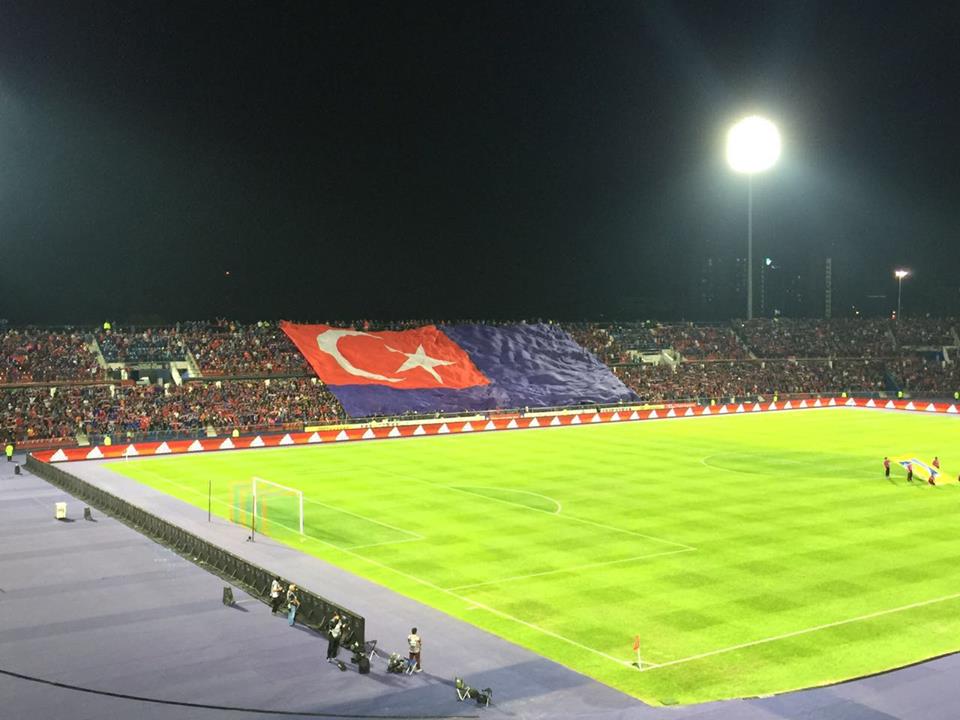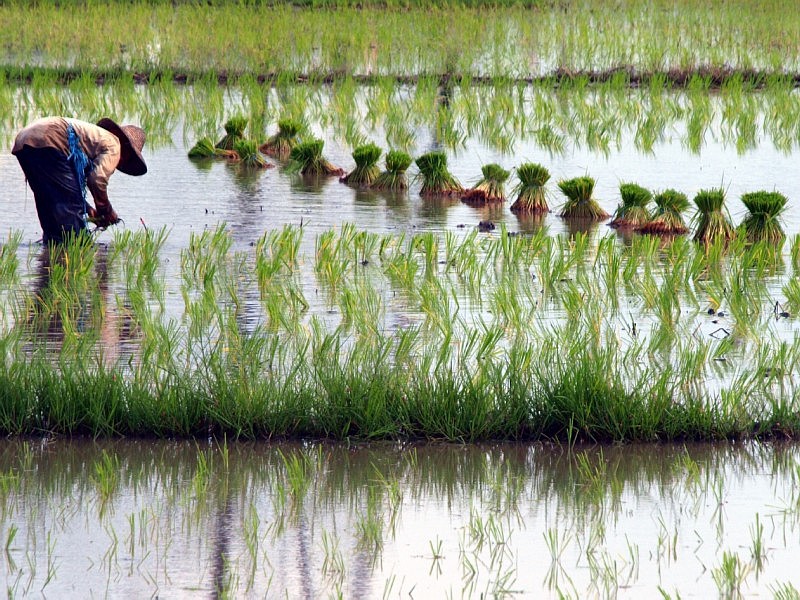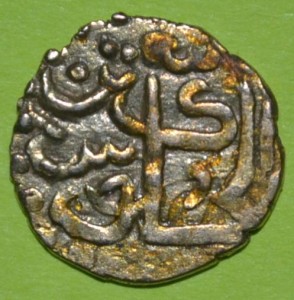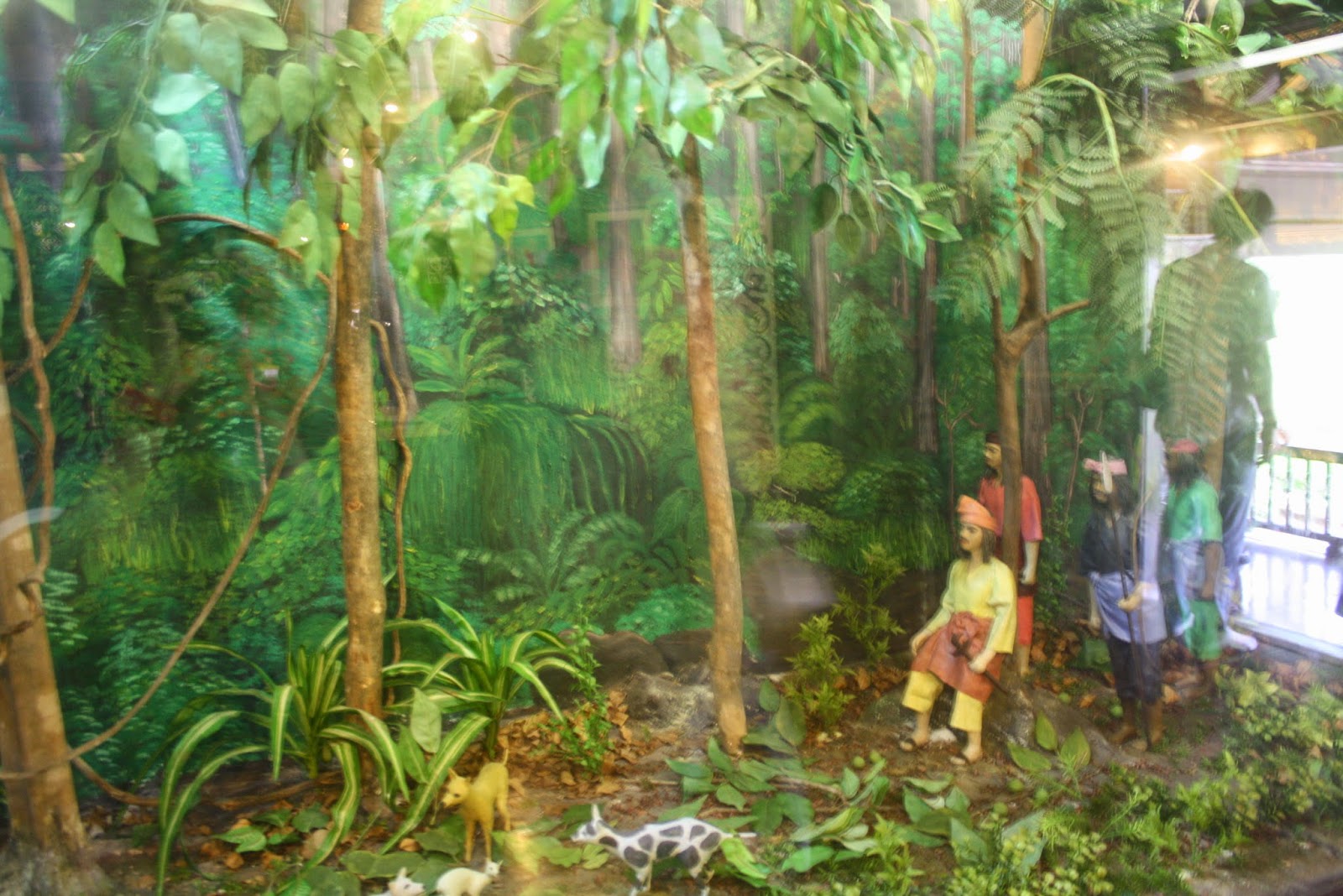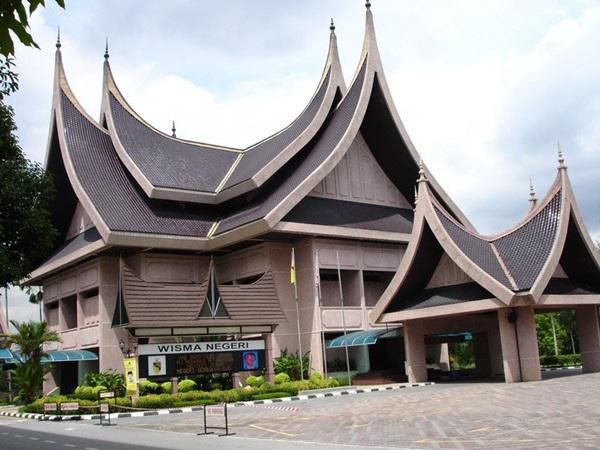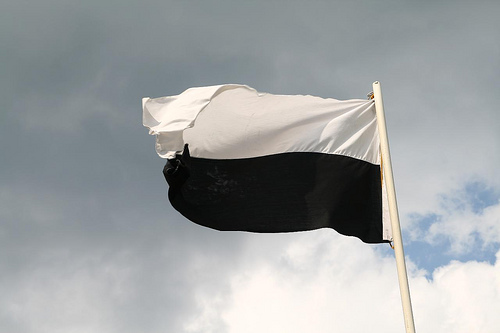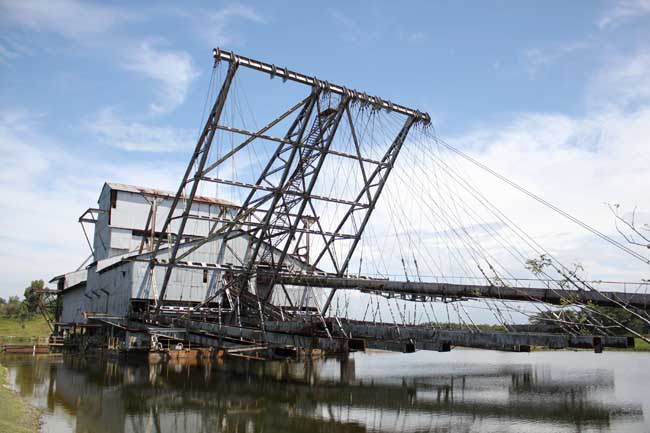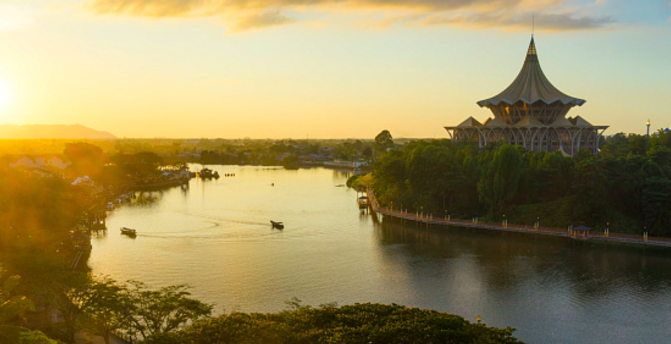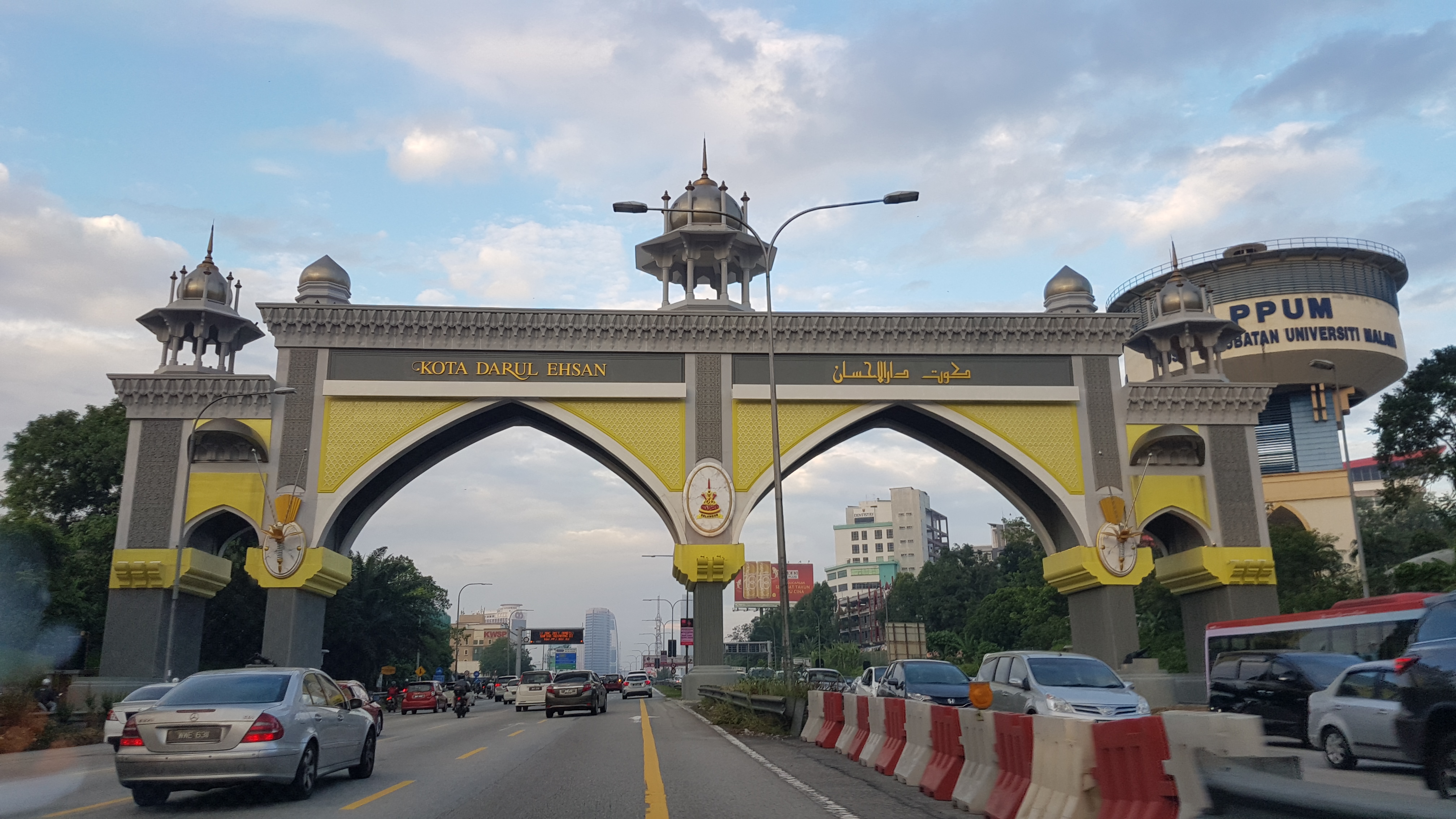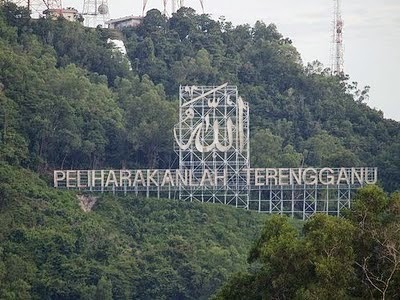The Stories And Facts Behind How The 13 States Of Malaysia Got Their Names
Never too late to brush up on your local history knowledge!
1. Johor
It is strongly believed that Johor's name was derived from the Arabic word "jauhar" which means precious jewel.
According to the Johor Tourism website, the term "jauhar" was bestowed by the Arab traders a long time ago, when they came here to trade spice.
It is also said that Johor, in the past, was known as "Gangganu", (which means treasured stones) among visitors and traders from Siam, or Thailand as we now know.
2. Kedah
The book, 'A study of ancient times in the Malay Peninsula and the Straits of Malacca', by Roland Braddell, states that Kedah was once referred to as "Gedda".
The name is said to be associated with the Hindustani word, "khadar", which means land suitable for paddy cultivation.
According to the Department of Information Services Malaysia (PNR), the origins of Kedah's name were influenced by four languages Arabic, Persian, Sanskrit, and Chinese.
Arabic and Persian:
According to Arabic and Persian sources, Kedah was initially referred to as "Kilah" (Ibnu Khurdadhbih 846), which means "deception"; "Kalah" (Ibnu Muhalhal, 941), which means "lost"; or "Qalha". It is said that Kilah contained tin mines and bamboo forests. Meanwhile, Qalha refers to the four districts of ancient Kedah namely, Kuala Qilah (now known as Kuala Sungai Merbok), Kuala Bahang (now known as Kuala Kedah), Kuala Merpah and Kuala Bara.
There is also an opinion stating that the name comes from the Arabic word Kedah "Kedah" which means "gelas berkaki" (footed drink glasses). It is speculated the name came about because many footed drink glasses sold by the Arabs could be found in the trade centre in Kedah.
Sanskrit writings:
According to the Sanskrit writings, Kedah is referred to as "Kataha" or "Kadara" and the writings in Tamil refers to Kedah as "Kadaram" or "Kalagam".
Meanwhile, some historians have said that the name originated from the word "Kheddah" which means elephant trap.
Chinese:
A Chinese Liang Dynasty record refers to Kedah as "Langgasu" or "Langa" (or Langkasuka).
Based on the journals of Chinese explorer I-Ching, Kedah was often referred to as "Chiah-Chin", "Kie Ta'a", or "Kieteha", while chronicles from the Tang Dynasty (618-916) stated that Kedah was referred to as "Kora" or "Kola".
3. Kelantan
It is not clearly known how the name Kelantan came about but, it has been suggested that the state got its name from the phrase "gelam hutan", in reference to the species of plants known as Melaleuca leucadendron.
Meanwhile, the book titled, 'The Historical Dictionary of Malaysia', mentioned that a Patani prince was sent to rule the land across the sea whose shore appear to be "shiny" hence gaining the name "Kilatan".
On the other hand, Italian researcher G. E. Gerini, contended that the name was derived from the combination of two words: "Kolo" and "Thana" or "Tanah" to become "Kolathana", "Kolamtanah", or "Kolantan".
It's interesting to note an Arabic inscription that read "Al-Julus Kelantan" (The Government Of Kelantan) was found on a gold coin, dated 577 AH (1181 AD).
4. Melaka
There are a few possible theories on how Melaka got its name. Here are the competing explanations:
1. According to the Malay Annals, Melaka was named after a tree. Parameswara, a prince from Palembang, was out hunting when he saw a pelanduk (mouse deer) kick one of his hound dogs. Astonished by the encounter, Parameswara thought that the land would be a great place as a new site for his Malay empire. He named the place after the tree - pokok melaka (Indian gooseberry) - which he was resting under.
3. Some people also believe that Melaka's name was derived from the Arabic words "mulaqah" (which means meeting) or "malakat" (which means gathering of all trade). Melaka was once a very important trading harbour, connecting traders from the Southeast Asia, Middle East and Africa, to name a few.
5. Negeri Sembilan
During the mid-15th century, settlers from the Minangkabau regions of Sumatra came to the Negeri Sembilan region and established a loose confederacy of nine luak (districts) in the state.
However, authors Nordin Selat and Abdullah Hassan, have pointed out that it has become a point of contention to identify which were the nine districts that were originally part of the confederacy when it was established.
These were the different combinations suggested by historians:
1. Segamat, Johol, Naning, Sungai Ujong, Jelebu, Rembau, Kelang (Klang), Jelai, Ulu Pahang
2. Segamat, Johol, Naning, Sungai Ujong, Jelebu, Rembau, Kelang (Klang), Jelai, Pasir Besar
3. Segamat, Inas, Naning, Sungai Ujong, Jelebu, Rembau, Kelang (Klang), Jelai, Ulu Pahang
4. Sungai Ujong, Jelebu, Rembau, Kelang (Klang), Naning, Segamat, Jelai (now Inas), Ulu Pahang, Pasir Besar (now Johol)
Over the centuries, new developments emerged, leading to some of the districts to separate. In 1895, the nine Minangkabau fiefdoms were consolidated with Selangor, Perak, and Pahang under the British ruling.
The modern state of Negeri Sembilan retains the name although there are only seven districts in the state namely, Seremban, Jempol, Port Dickson, Tampin, Kuala Pilah, Rembau, and Jelebu.
6. Pahang
Historical writings by the Chinese revealed that Pahang was known by different names such as Pang-Hang, Peng-Heng, Pang-Heng, Pong-Fong, Phe-Hang, and Pang-Kang.
Researches suggest that people from Arab and Europe used to call Pahang as Pam, Pan, Paam, Paon, Phaan, Phang, Paham, Pahan, Pahaun, Phaung or Pahangh.
According to W. Line, Pahang is a Khmer word for "tin". It is believed that the state's name was derived from it as at one point in time, Sungai Lembing was one of the major tin producers in the state of Pahang.
Meanwhile, an ancient tale from Malays in the olden days, tells a story that there was a large tree, a Macaranga spp species, that grew across the Sungai Pahang river a long time ago. The tree, known as pokok mahang, is said to be where the name 'Pahang' originated from.
7. Perak
The origins of Perak's name is uncertain but here are a few explanations that have emerged over time:
The most popular school of thought is that Perak was used as the state's name because it means silver in Malay, in reference to the silvery colour associated with tin. Perak used to boast of having one the richest tin deposits in the world in the past.
According to the Perak state government website, some people opined that the state was named after Bendahara Tun Perak.
There are also those who think that the name was derived from the phrase "kilatan ikan dalam air" (the glimmer of a fish in the water) that looks like "perak" (silver).
8. Perlis
The origin of Perlis' name, like a few other names discussed above, is a mystery. However, researchers, writers, and historians have come up with possible explanations on where Perlis might have gotten its name from:
1. According to the late National Historian of Malaysia, Mohd Yusuf bin Adil (fondly known as Buyong Adil), the name stems from the Thai phrase "Phra Loi" (Maphrau Loi) which means kelapa hanyut (coconut washed ashore) since there were many coconuts found on the shores of Kuala Perlis. Locals then shortened the phrase until it sounded like "pereleh" or Perlis.
2. Some believe that the state's name was a shortened form of the Malay word "peroleh" (obtain) as the state was a "gift" from Kedah, which it was a part of before it became a state on its own.
3. According to the authors of the book, 'Negeri Perlis Indera Kayangan: Sejarah Pembentukan Sebuah Negeri Berdaulat', which discusses the history of the state, Perlis' name came from a tree of the same name which might have already gone extinct.
4. Research suggests that the name Perlis could have been derived from the Northern Malay dialect word "perelus" which roughly translates as "foot falling into a crack". This is because Perlis is said to have a wide land filled with mud, whereby the feet of people will "terperlus" and go into the ground when they step on the land.
5. There are suggestions that Perlis was named after a person known as 'Tok Perlis' but it is not known who exactly this person was. Some said that the name was derived from a Tok Perlis tomb located in Bukit Mengulang.
6. Perlis is believed to be derived from the French word "perlite" which means "rock". Apparently, there was a huge rock nearby Sungai Perlis and people kept referring to the place as "perlite" until it eventually became "Perlis".
7. Some have said that the state's name came from 'Peran Leh', that is supposedly the name of a "peran" (actor) named Saleh.
9. Pulau Pinang
In the early days of Pulau Pinang, the island was known as 'Pulau Ka Satu', which means "only island". Sources said that this name was given by a Sumatran trader known only as Ragam, when he found out that this is the only isolated island while commuting from Lingga to Kedah.
The name caught on and was used until the arrival of the British in 1786.
The island eventually adopted the name from the "pokok pinang" (betel nut palms) that were growing profusely on the island, following the establishment of a British entrepot and naval base.
10. Sabah
No one is certain how Sabah's name came about but there have been a few theories, namely:
1. The origin of the name Sabah is believed to have originated from a type of banana plant known as "saba". These bananas are commonly found along the west coast of Sabah, where the locals plant and cultivate them as a food source. Pisang saba is also known as "pisang jaba" among the Bajau community in the state.
2. A research cited Tan Sri Datuk R.M. Jasni, who suggested that Sabah was derived from the Malay word "sabak". Sabak roughly translates as "the act or place of boiling down sugar palm juice or sap".
3. Jasni has also suggested that the word Sabah was derived from the Arabic word for "seven": "sab’at" or "sab'a", but offered no further elaboration on this finding.
4. Jasni also has another theory that the state's name is of Brunei Malay origin, deriving from the term "seberang". Once again, there was no plausible explanation for this observation.
5. Allen Maxwell's research which was published in the 1981-1982 Sabah Society Journal, claimed that Sabah's name originated from the Brunei Malay term of "saba", which refers to "downstream" or "waterwards" or "seawards" in the Kedayan language. It is noted that Sabah is located to the north-west, or upstream of Brunei.
11. Sarawak
There is no consensus on the origins of Sarawak's name. However, it is widely believed that the state is named after Sungai Sarawak.
But how did Sungai Sarawak get its name? It is said that Sarawak River was named after a type of mineral ore, "serewa", which was widely mined in the area.
On the other hand, there have been claims that the name Sarawak was derived from the phrase "serah kepada awak" (hand over to you). It has been alleged that this was said by Rajah Muda Hassim to James Brooke when surrendering Kuching, as a way to reward the latter's help in ending the Seniawan war.
12. Selangor
Selangor got its name from a settlement near the river estuary which is now known as Kuala Selangor. But how did the name 'Selangor' come about?
'Selangor' itself does not mean anything in Malay and researchers think the word may have come about from an abbreviation, or a combination of changes to the original word over time.
It is said that the name came from "langau", a type of fly. Local legends claim that a warrior who was travelling was outwitted by a fly that was disturbing him while he was resting by the river bank.
The incident led him to explore the land and he finally settled down, naming the place "se-langau", which eventually became "Selangor".
According to another story, traders had named the estuary as 'Kuala Mentangau' since the area was surrounded with a type of mangrove plant known as "mentangau". Over time, the name evolved from Kuala Mentangau into Kuala Selangor.
Some sources also claimed that Selangor is a combination of the word "salang" (stabbing) and "jemur" (dry in the sun). The two words were combined to create the word "selangur". Kuala Selangor is said to be a place for people in the past to torture traitors by stabbing them and putting them under the sun.
13. Terengganu
The fact is, no one is really certain how the name Terengganu came about.
Based on an ancient story, Terengganu is believed to come from the phrase "taring anu".
Apparently, a hunter from Pahang who was hunting in what is now southern Terengganu, told a friend that a fang that he found lying on the ground was a "taring anu" (fang of something) because he did not know which animal the fang belonged to.
Soon, the group of hunters began to refer to this area as "the land of taring anu".
Another theory is closely related to how Kelantan got its name, where people across Terengganu saw flashes of lightning on the horizon. They said, "terang-nya-ganu", which eventually evolved into 'Trengganu'.
14. Kuala Lumpur
NOTE: Kuala Lumpur is one of the Federal Territories of Malaysia. It is not a state but since it’s Malaysia’s capital city, we decided to include it in this story too.
A group of Chinese tin miners - 87 in total - was brought in to open new and larger tin mines. They eventually met up near the Klang and Gombak rivers and set up camp, naming the spot Kuala Lumpur, which literally means "muddy confluence".
It is believed that Sungai Gombak was previously known as 'Sungei Lumpur'.
There were also speculations that the name Kuala Lumpur was derived from Pengkalan Lumpur (muddy jetty).
